On 26 December, diamond dust halos were captured by webcams (Hydronet network) at Lysa hora in Krkonose (Giant Mountains). In addition to the more usual phenomena, there were helic arc, Tape infralateral arc and Wegener arc in the sub-area. The Parry orientation of crystals may indicate possible Hastings arc ( 1 – 2 – 3 – 4 – 5 – 6 – 7 ).
You can see all the photos from the west and south webcams located on Lysa hora at ( 8 ).
On the same day, at the same place Jiri Zujic also made observations. Note the parhelion legs ( 9 ).
One picture from the webcam, placed on Certova hora in Krkonose, shows 120° parhelion ( 10 ).
Martina Durasova observed at Bozi dar in Krusne hory (Ore Mountains) clear phenomena with weak Moilanen arc ( 11 – 12 – 13 )
On 27 December, Jiri Simek also observed diamond dust halos from Lesni bouda in Krkonose ( 14 )
These pictures from Humlnet webcam in Pec pod Snezkou in Krkonose, show a high pillar caused by halogen lamp from passing car ( 15 – http://www.ian.cz/redsys/upload/838302-964647.gif“>16 )
Happy New Year 2009!
Text: Martin Popek, Monika Pacltova

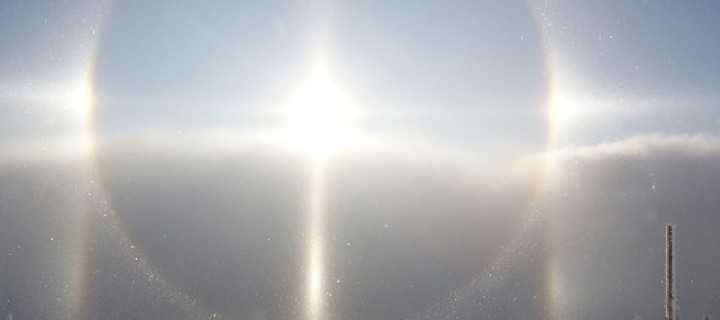
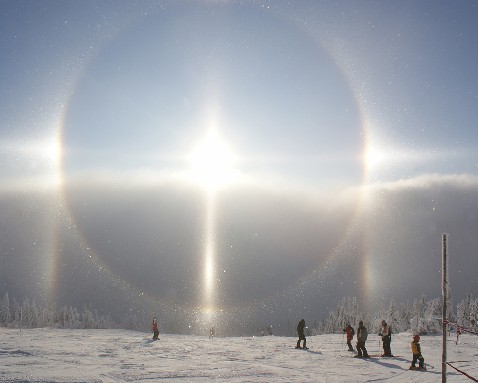
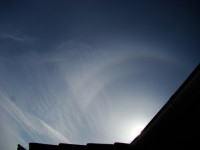
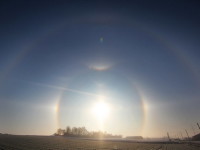
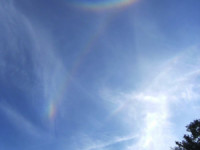
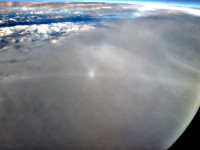
Great display! Congratulations!
Does Hydronet’s site have archive of webcams’ photos?
website hydronet
and website humlnet
The Czech opened their season with some good displays. And it looks like there is almost sub-120 parhelion in (10).
Recent galleries are available on addresses 1-8 like
http://78.102.13.147/lysa/photo/l2/gallery/index6.html
http://78.102.13.147/lysa/photo/l3/gallery/index6.html
Older photographs (up to 5 years) are also stored but not easily available at the moment
There’s every year something exciting from Czech ski slopes ! Not bad.
What you folks make of (2)? To me the outer fainter arc looks like 46 supralateral arc. And the brighter one is 46 infra with probably 46 Parry arc bulging in it.
So, this display had columns. Should make simulations, though.
Yes I have to say the Czech folks get some very nice halo displays. I wonder if anyone has done any halogen lamp displays in the Czech Republic?
Drop dead gorgeous!
Gorgeous!
Moral: For an aesthetic halo photo, you gotta ditch the blocker and have interesting foreground. And of course start with a lovely display.
Thanks.
Some more Riesengebirge foreground these days aftere Christmas were halo effect quite common here, in the height about 1300 m n m which was approxomately the upper level of clouds that time
these days aftere Christmas were halo effect quite common here, in the height about 1300 m n m which was approxomately the upper level of clouds that time
http://picasaweb.google.cz/pzahrad/Vanoce20081226#
Here is simulation clarifying the situation in (2). There may be lower 46 Parry infralateral bulging there, but then again the (column) 46 infralateral arc has also other bulges from unevenly distributed diamond dust.
The lower 46 Parry supralateral is rather cryptic in the simulation.
The simulation in the above comment was made with Jukka Ruoskanen’s software. Sorry, it is so easy to forget giving this credit.
It is an amazing display indeed as well as the simulation! As for Hydronet’s photo (No. 2 in the article), the Sun elevation should be approx. 14 deg.
Ok, thanks. I am probably making not a new simulation, but adding the two degs would increase a bit of a distance between (column) 46 infra and supra and also make their relative intensities more like in the photo.
Thank you for the answer, the difference really in not critical :-). I tried to enhance stitched photos:
http://ukazy.astro.cz/gal/20081227Hydronet-LysaHora-Comp1218_l3+1218_l2.jpgand fit it with another simulation
http://ukazy.astro.cz/gal/20081227Hydronet-LysaHora1218-1simulace+text.jpg.
By the way is there any major difference between Les Cowley’s HaloSim and Jukka Ruoskanen’s software? Both seem to work perfectly.
Excellent work Tomas! That gives much better picture of what’s going on.
Congratulations from me, too
Marko’s simulation and Tomas’s composite are really fine works!
Is it possible to get a copy of you photo or a print?